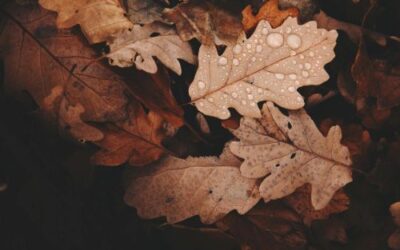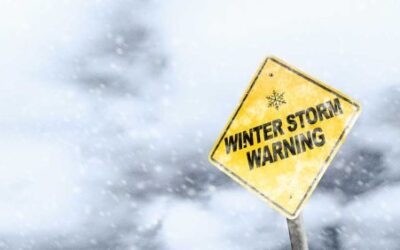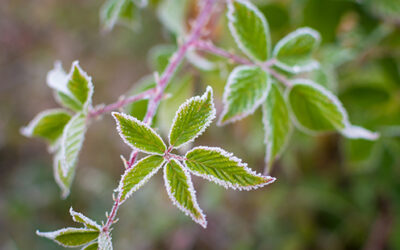Winter can be a challenging season for your trees and shrubs. The cold temperatures, ice, snow, and fluctuating weather patterns can leave a lasting impact on your landscape. As the frost begins to thaw and the first signs of spring appear, it’s essential to assess the health of your trees and shrubs for signs of winter damage. Knowing what to look for can help you take early action to restore the health and beauty of your property.
1. Leaf and Needle Discoloration
Evergreens, such as pines, firs, and spruces, are particularly vulnerable to winter damage. One of the first signs of stress is needle or leaf discoloration. If you notice yellowing, browning, or scorched foliage, it could indicate desiccation, which happens when trees lose water faster than they can absorb it from frozen soil.
Deciduous trees, while dormant in winter, may also show signs of damage through dried or curled leaves that remain on branches instead of dropping in the fall. Discolored or wilted foliage is a key indicator that your plants may have suffered from harsh winter conditions.
2. Broken Branches
Heavy snow and ice accumulation can weigh down branches, causing them to snap or crack under the strain. Inspect your trees and shrubs for broken or hanging branches. These damaged branches pose a risk to both the plant’s health and the safety of your property. Prune any broken limbs immediately to prevent further harm or disease from entering through the wound.
When pruning, it’s important to make clean cuts at the correct location to encourage healthy regrowth. If the damage is extensive, consider hiring a professional landscaping company in Charlottesville to handle the task safely and efficiently.
3. Bark Splitting and Frost Cracks
Bark splitting and frost cracks occur when fluctuating winter temperatures cause the outer bark to expand and contract rapidly. This condition is particularly common in young or thin-barked trees, such as maples and cherries. Look for vertical cracks running along the trunk of the tree or areas where bark has peeled away entirely.
While minor cracks may heal naturally over time, severe splitting can leave trees vulnerable to pests and disease. To protect damaged trees, consider applying a tree wrap during the next winter season or seeking advice from a professional landscaping company.
4. Winter Burn on Evergreens
Winter burn is a common issue for evergreens exposed to winter winds and intense sunlight. This condition occurs when plants lose moisture faster than they can replenish it, especially when the ground is frozen. Symptoms of winter burn include browning or drying of needles, particularly on the windward side of the tree.
To prevent winter burn in the future, consider applying an anti-desiccant spray in late fall and adding a layer of mulch around the base of the tree to retain soil moisture.
5. Root Damage and Heaving
During harsh winters, alternating freeze-thaw cycles can cause the ground to heave, potentially damaging shallow roots. Look for signs of root heaving, such as exposed roots near the surface or plants that appear to have shifted in the soil.
Roots damaged by freezing temperatures may result in poor growth or even plant death. Address root damage by replanting shifted shrubs, applying mulch to protect roots, and providing proper hydration as the soil warms.
6. Bud and Flower Loss
Early-blooming trees and shrubs, such as magnolias and forsythias, are especially susceptible to winter damage. A sudden frost after an early thaw can kill developing buds, resulting in fewer flowers in the spring.
Check your trees and shrubs for signs of damaged buds or stunted growth. While there’s little you can do to save the lost blooms, proper care, such as fertilizing and pruning, can help the plant recover for the next growing season.
7. Animal Damage
Winter can be tough on wildlife, and hungry animals may turn to your trees and shrubs for sustenance. Look for gnawed bark, clipped branches, or stripped foliage caused by deer, rabbits, or other animals. Severe bark damage can girdle trees, cutting off nutrient flow and potentially killing the plant.
To prevent animal damage in the future, consider installing physical barriers such as tree guards or netting. Repellents and deer-resistant plants are also effective ways to protect your landscape.
8. Snow Mold and Fungal Growth
In areas where snow lingers on the ground, shrubs and low-growing plants may develop snow mold or other fungal diseases. Snow mold appears as gray or pink patches on grass or shrubs and thrives in cool, wet conditions.
If you spot signs of fungal growth, rake away any matted debris and allow the area to dry. Applying fungicide may help in severe cases, but proper cleanup and maintenance are usually enough to address the issue.
What to Do Next
If you’ve identified winter damage on your trees or shrubs, taking prompt action is key to restoring their health. Here are a few steps you can take:
- Prune Damaged Branches: Remove broken, dead, or diseased branches to prevent further issues.
- Apply Mulch: Add a layer of mulch to protect roots, retain moisture, and improve soil health.
- Hydrate Thoroughly: Once the ground has thawed, ensure your plants receive adequate water to recover from winter stress.
- Seek Professional Help: If the damage is extensive or you’re unsure how to proceed, a local landscaping company can provide expert care.
Why Choose Jack’s Lawn Care & Landscaping
Caring for your trees and shrubs after winter can be a daunting task, but you don’t have to do it alone. At Jack’s Lawn Care & Landscaping, we specialize in helping homeowners and businesses in Charlottesville, VA, restore their landscapes to their full potential. From professional pruning and shrub trimming to property cleanup and lawn care services, we have the expertise to handle even the most challenging winter damage.
Whether you need residential lawn care, shrub trimming, or a complete property cleanup, Jack’s Lawn Care & Landscaping is here to help. Contact us today to schedule your consultation and ensure your trees and shrubs are ready to thrive this spring!



